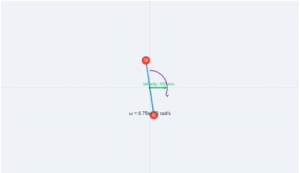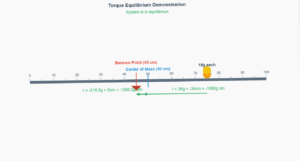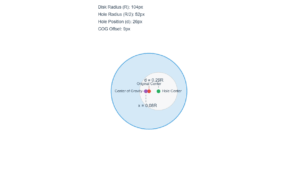3D Ladder Equilibrium Problem
Example
Question:
A 3 m long ladder weighing 20 kg leans on a frictionless wall. Its feet rest on the floor 1 m from the wall as shown in the figure.
Find the reaction forces of the wall and the floor.
Solution:
The ladder \(AB\) is 3 m long, its foot \(A\) is at a distance \(AC = 1\,\mathrm{m}\) from the wall.
From Pythagoras: \(BC = 2\sqrt{2}\,\mathrm{m}\).
The forces on the ladder are:
- weight \(W\) at centre of gravity \(D\)
- reaction forces \(F_1\) (horizontal, at wall \(B\)), \(F_2\) (normal, at floor \(A\)), \(F\) (friction at floor \(A\))
Summary:
Reaction force by wall: \(F_1 \approx 34.6\,\mathrm{N}\)
Reaction force by floor: \(F_2 \approx 199\,\mathrm{N}\), at an angle \(\alpha \approx 10^\circ\) to vertical.
Problem Statement
A 3m long ladder weighing 20 kg leans on a frictionless wall. Its feet rest on the floor 1 m from the wall. Find the reaction forces of the wall and the floor.
Solution
From Pythagoras: BC = √(3² - 1²) = 2√2 ≈ 2.828 m
Forces:
Weight (W) = 20 kg × 9.8 m/s² = 196 N
Translational Equilibrium:
Vertical: N - W = 0 ⇒ N = 196.0 N
Horizontal: F - F₁ = 0 ⇒ F = F₁
Rotational Equilibrium (about point A):
2√2 F₁ - (1.5) W = 0 ⇒ F₁ = W/(4√2) ≈ 34.6 N
Resultant Force at Floor:
F₂ = √(F² + N²) = √(34.6² + 196²) ≈ 199.0 N
Angle with horizontal: α = tan⁻¹(N/F) ≈ 80°



